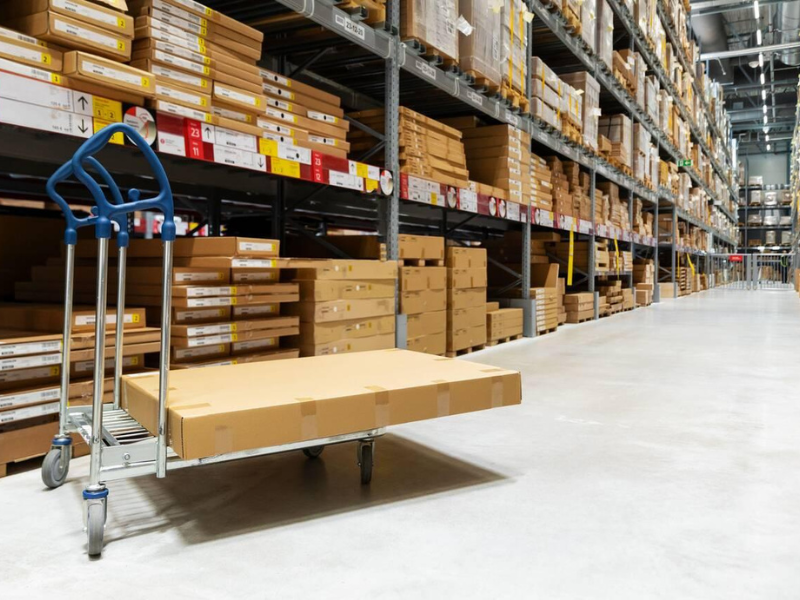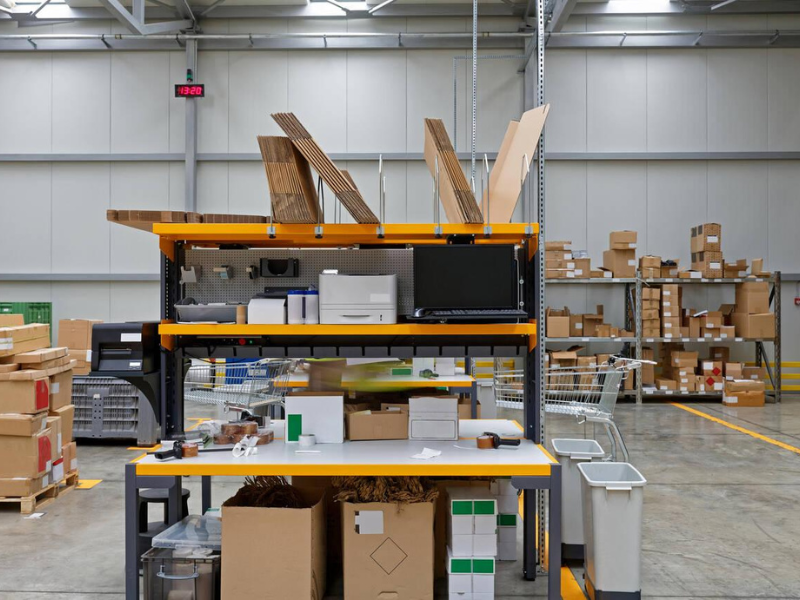Logistics plays a critical role in business operations by ensuring the smooth movement of goods from the point of origin to the end consumer. This translates to increased efficiency, reduced costs, improved customer satisfaction, and better inventory management.
3PL stands for third-party logistics, which is the practice of outsourcing logistics functions to a specialized provider. 3PL services can include warehousing, transportation, and fulfillment.
In-house logistics refers to a company managing its entire supply chain operations internally, meaning they handle all aspects of warehousing, transportation, inventory management, and order fulfillment within their own organization.
What Is 3PL and How Does It Work?
As mentioned earlier, 3PL stands for third-party logistics. This is when a business outsources its logistics functions to a specialized company. This type of logistics company offers different services:
- Warehousing: Storing inventory in warehouses
- Order fulfillment: Processing orders, picking and packing items, and shipping them to customers
- Shipping: Transporting goods to customers
- Receiving: Receiving goods from customers
- Returns processing: Handling returns from customers
Key Benefits of Using 3PL
Cost Reduction

By leveraging a 3PL’s established network and infrastructure, businesses can reduce transportation, warehousing, and labor costs significantly.
Expertise And Experience
3PLs possess specialized knowledge and experience in logistics management, allowing businesses to benefit from best practices without building their own expertise.
Inventory Management
3PLs can effectively manage inventory levels, reducing stockouts and optimizing storage space.
Improved Customer Service
Faster delivery times and reliable fulfillment processes enabled by a 3PL can lead to higher customer satisfaction.
In-House Logistics: Control and Customization
Advantages Of In-House Logistics
Full Control: Companies can directly manage every aspect of their logistics, including warehousing, transportation, and inventory, allowing for tighter quality control and quicker response to issues.
Brand Image Enhancement: Using company-branded vehicles and delivery personnel can strengthen brand recognition and customer trust, particularly for customer-facing deliveries.
Improved Communication: Direct communication between different departments within the company can streamline operations and facilitate faster decision-making.
Potential Cost Savings: When managed effectively, in-house logistics can sometimes be more cost-efficient, especially for companies with high volume and predictable delivery needs.
Flexibility: Companies can quickly adjust their logistics strategies based on changing market demands or internal priorities without relying on a third-party provider.
Comparing 3PL and In-House Logistics: How to Choose the Right Fit

When deciding between a 3PL (Third-Party Logistics) and in-house logistics, consider factors like your business size, demand fluctuations, desired control level, and upfront costs. Smaller businesses often benefit more from a 3PL due to its lower initial investment and scalability, while larger companies might prefer in-house logistics for greater control over operations and potential long-term cost savings
However, a 3PL can offer significant advantages in flexibility, technology access, and cost efficiency, especially when dealing with fluctuating demand.
Finding the Right Logistics Approach for Your Business
Deciding between 3PL and in-house logistics depends on your business’s unique needs. If you’re a small or growing business, a 3PL can offer the flexibility, cost savings, and expertise you need to handle logistics without breaking the bank. It’s a great option if you want to focus on growing your business while leaving the logistics to the experts.
On the other hand, if your business is well-established, has a steady flow of orders, and you want more control over your logistics processes, then managing everything in-house might be the way to go. You’ll have the ability to make quick decisions, maintain your brand image, and potentially save costs in the long run. However, this option does require more resources, including staff, technology, and infrastructure.
There’s no one-size-fits-all answer when it comes to choosing between 3PL and in-house logistics. It’s important to weigh the pros and cons of each approach based on your business size, budget, and growth plans. Whether you choose to outsource logistics or manage it internally, the goal is to create a smooth, efficient supply chain that keeps your customers happy and your business running smoothly.

